|
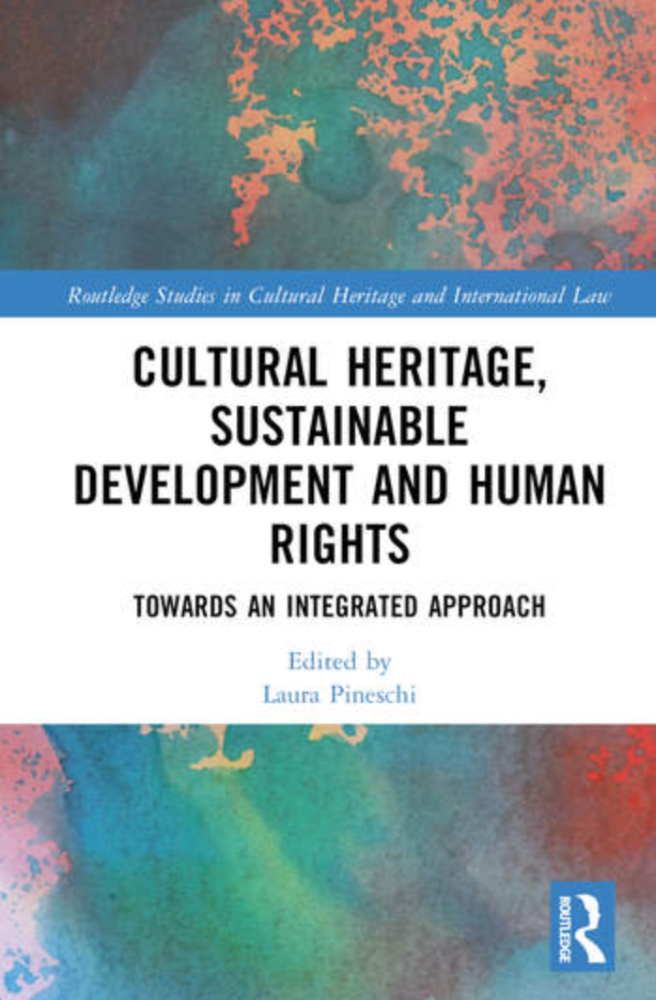 L. Pineschi (ed.) L. Pineschi (ed.)
Cultural Heritage, Sustainable Development and Human Rights Towards an Integrated Approach,
Routledge, 2024
This book offers a thorough academic investigation on the importance of cultural heritage to sustainable development and cultural rights from an international law perspective. Providing an in-depth review of the possible intersections between cultural heritage, sustainable development and cultural rights and the limits of the current legal and institutional framework, it will be of interest to researchers and scholars of international law, cultural heritage law, environmental law and human rights law.
|
|
|
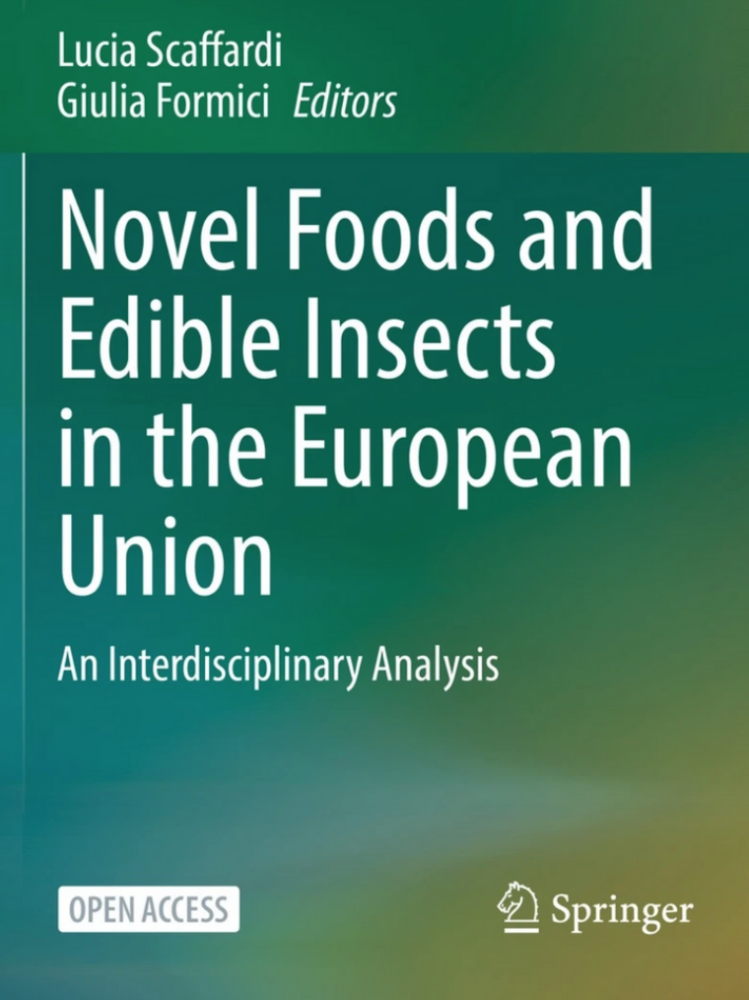
L. Scaffardi, G. Formici (eds.), Novel Foods and Edible Insects in the European Union. An Interdisciplinary Analysis, Springer, 2020
- In-depth study on a vast range of issues connected to the regulation of Novel Foods in the European Union, pursuing an interdisciplinary approach and thus providing a comprehensive picture of this complex topic;
- the book contributes to the lively public debate following this long-awaited authorisation by examining the legal issues arising from the application of the Novel Foods Regulation to these peculiar new foods; the EFSA risk assessment evaluations; the consumers’ perceptions and potential future of insect-based products’ market in the EU;
- it seeks to promote an informed debate in order to find innovative solutions to pressing problems concerning how to feed the world of tomorrow.
|
" Coming Soon...? A reappraisal of the legal and ethical implications of AWS ahead of the first metting of the CCW Group of Governmental Experts on Lethal AWS" Coming Soon...? A reappraisal of the legal and ethical implications of AWS ahead of the first metting of the CCW Group of Governmental Experts on Lethal AWS"
- E. Carpanelli, N. Lazzerini, Introduction;
- D. Amoroso, Jus in bello and jus ad bellum arguments against autonomy in weapons systems: A reappraisal;
- A. Spagnolo, Human rights implications of autonomous weapon systems in domestic law enforcement: sci-fi reflections in a lo-fi reality;
- O. Ulgen, Kanthian ethics in the age of artificial intelligence.
|
|
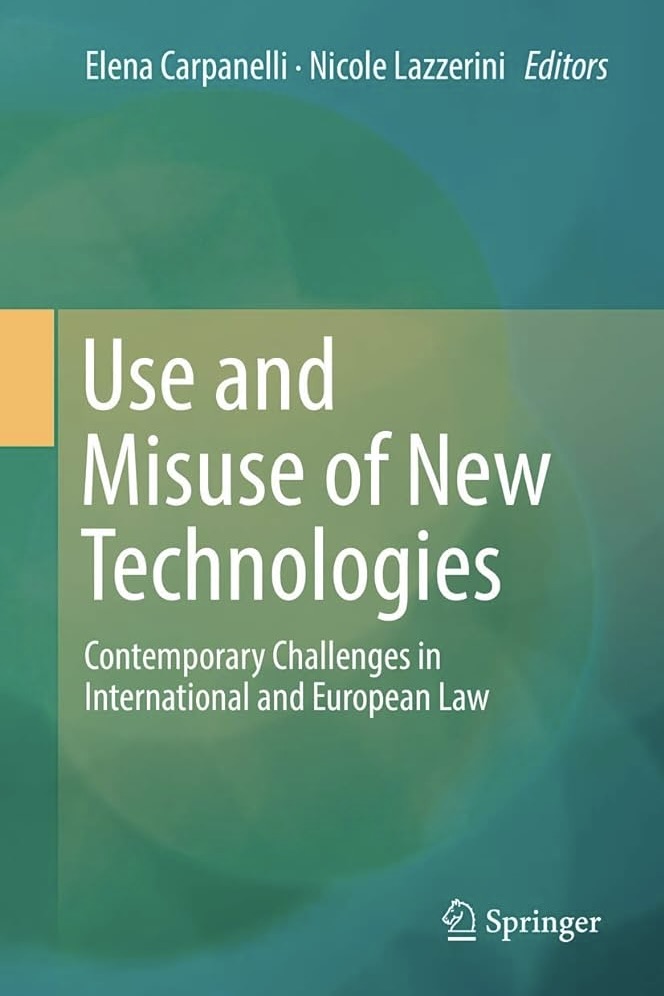 E. Carpanelli, N. Lazzerini (eds.) E. Carpanelli, N. Lazzerini (eds.)
The Use and Misuse of New Technologies: Contemporary Challenges under International and European Law
Springer, 2019
• Deals with complex, cutting-edge issues that, though increasingly relevant on the current legal landscape, have not been thoroughly addressed in academic research;
• Features contributions by young scholars whose core research activities focus on the specific topics they discuss;
• Provides an overview of the most relevant issues in the field, which are approached from a two-fold perspective.
|
|
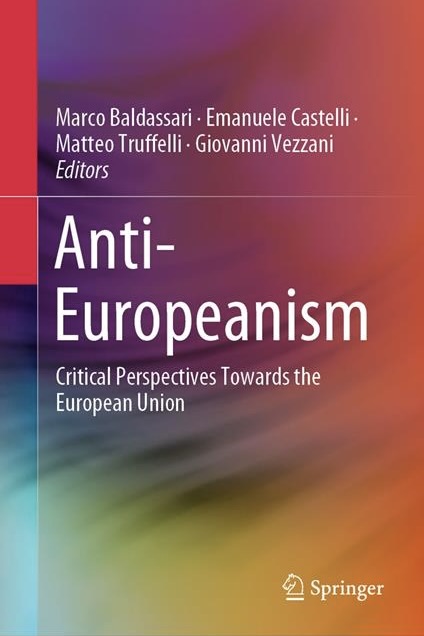 M. Baldassari, E. Castelli, M. Truffelli, G. Vezzani (eds.) M. Baldassari, E. Castelli, M. Truffelli, G. Vezzani (eds.)
Anti-Europeanism. Critical Perspectives Towards the European Union
Springer, 2020
• Highlights the evolution of euroscepticism in the history of ideas and political cultures
• Analyzes the causes and effects of the popularity of EU-critical positions and doctrines, such as souverainism, neo-nationalism and neo-populism
• Presents country studies to compare different populist movements and parties, such as the Five Stars Movement in Italy, Syriza in Greece and UKIP in the UK
|
|
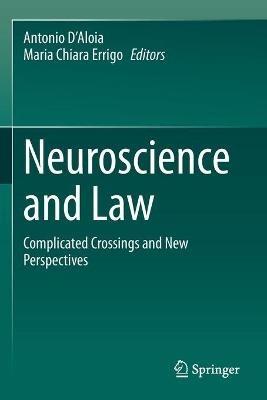 A. D'Aloia, M.C. Errigo (eds.) A. D'Aloia, M.C. Errigo (eds.)
Neuroscience and Law. Compliated Crossings and New Perspectives
Springer, 2020
• Interdisciplinary and detailed work on the topic;
• Offers useful guidelines for scientists regarding ethical and legal concerns about their discoveries;
• Contributes to law studies dealing with the practical use of neuroscientific proof in the law room;
• Analyses philosophical questions (free will, responsibility, lie detection).
|
|
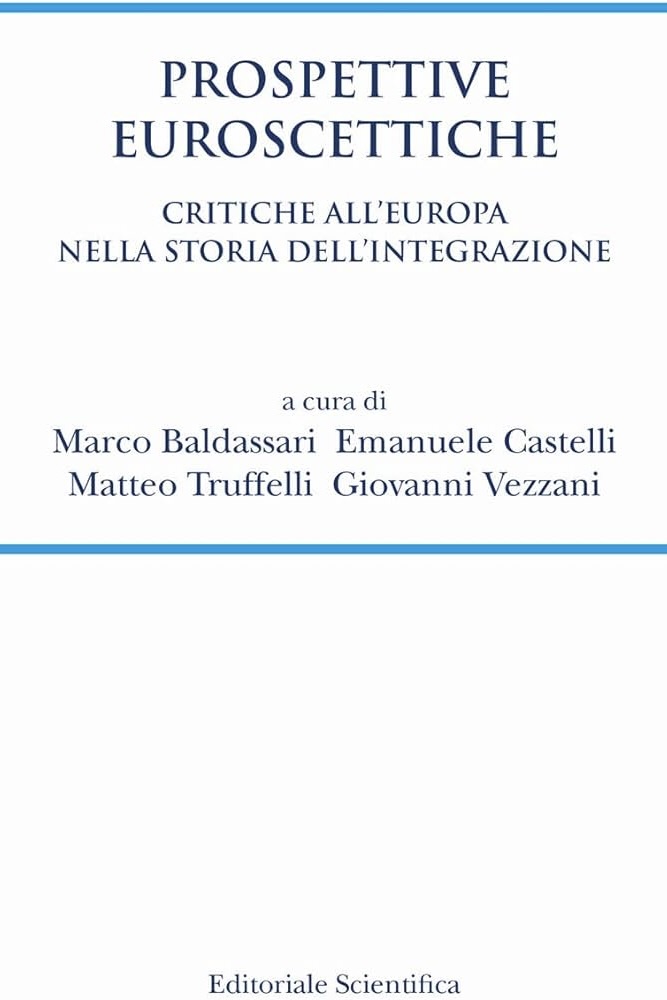 M.Baldassari, E. Castelli, M. Truffelli, G. Vezzani (a cura di) M.Baldassari, E. Castelli, M. Truffelli, G. Vezzani (a cura di)
Prospettive euroscettiche. Critiche all'Europa nella storia dell'integrazione
Editoriale Scientifica, 2020
• Analyses the evolution of Euroscepticism in the history of political ideas and cultures;
• Analyses the causes and effects of the popularity of positions and doctrines critical of the EU, such as Souverainism, neo-nationalism and neo-populism;
• Shows country studies comparing different populist movements and parties, such as the Five Star Movement in Italy, Syriza in Greece and UKIP in the UK.
|
|
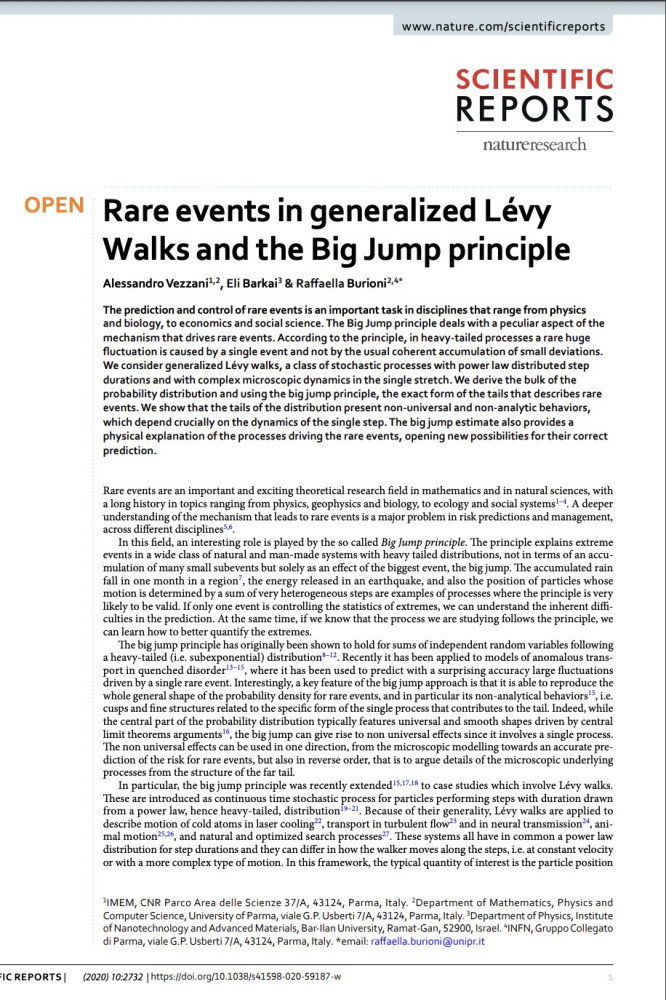 A. Vezzani, E. Barkai, R. Burioni A. Vezzani, E. Barkai, R. Burioni
Rare Events in Generalized Levy Walks and the Big Jump Principle
in Nature Scientific Reports, 2020
The prediction and control of rare events is an important task in disciplines that range from physics and biology, to economics and social science. The Big Jump principle deals with a peculiar aspect of the mechanism that drives rare events. According to the principle, in heavy-tailed processes a rare huge fluctuation is caused by a single event and not by the usual coherent accumulation of small deviations. We consider generalized Lévy walks, a class of stochastic processes with power law distributed step durations and with complex microscopic dynamics in the single stretch. We derive the bulk of the probability distribution and using the big jump principle, the exact form of the tails that describes rare events. We show that the tails of the distribution present non-universal and non-analytic behaviors, which depend crucially on the dynamics of the single step. The big jump estimate also provides a physical explanation of the processes driving the rare events, opening new possibilities for their correct prediction.
|
|
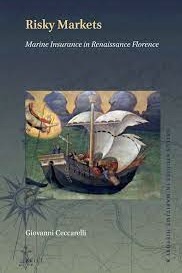 G.M. Ceccarelli, Risky markets. Marine Insurance in Renaissance Florence G.M. Ceccarelli, Risky markets. Marine Insurance in Renaissance Florence
Brill, 2021
Risky Markets explores a crucial moment in the history of insurance, when tools designed to tackle sea risks were in their first making. Renaissance Florence is the setting for one of the first attempts to develop a market specialized in protecting maritime trade. Drawing on a unique collection of sources, the book provides a wide ranging account about the players, institutions, business practices and organizations of the insurance business, shedding light on the forecasting techniques underwriters used. Ceccarelli shows that the market was a small club where trust relations and shared codes of conduct prevail over competition. In a world without probability this was the way by which a business community managed transforming uncertainty into a calculable risk.
|
|
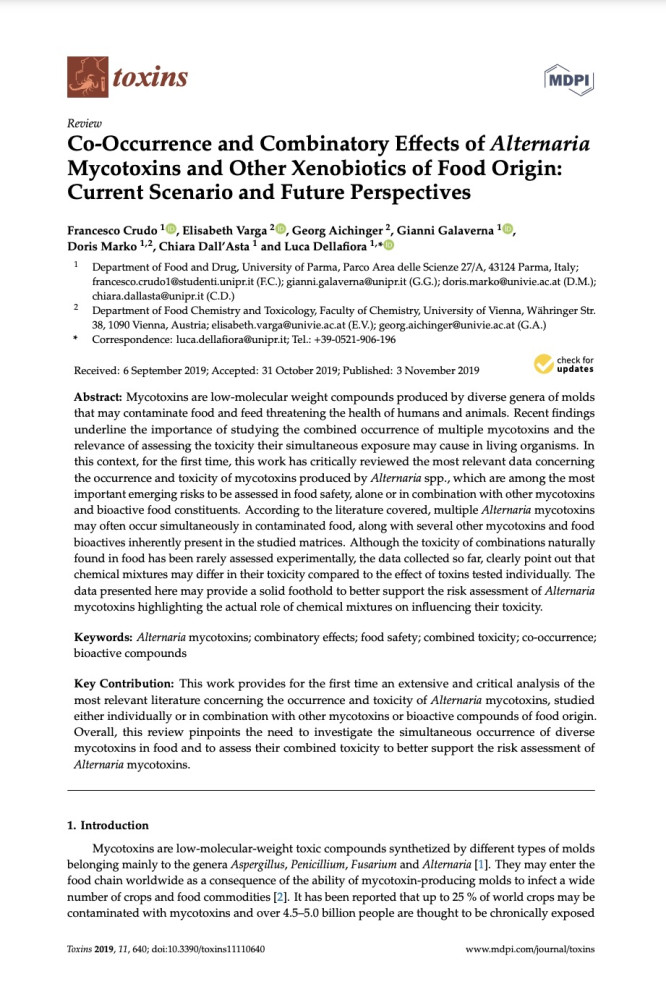 F. Crudo, E. Varga, G. Aichinger, G. Galaverna, D. Marko, C. Dall'Asta, L. Dellafiora F. Crudo, E. Varga, G. Aichinger, G. Galaverna, D. Marko, C. Dall'Asta, L. Dellafiora
Co-occurrence and combinatory effects of Alternaria mycotoxins and other xenobiotics of food origin: current scenario and future perspectives
in Toxins, 2019
This work provides for the first time an extensive and critical analysis of the most relevant literature concerning the occurrence and toxicity of Alternaria mycotoxins, studied either individually or in combination with other mycotoxins or bioactive compounds of food origin. Overall, this review pinpoints the need to investigate the simultaneous occurrence of diverse mycotoxins in food and to assess their combined toxicity to better support the risk assessment of Alternaria mycotoxins.
|
|
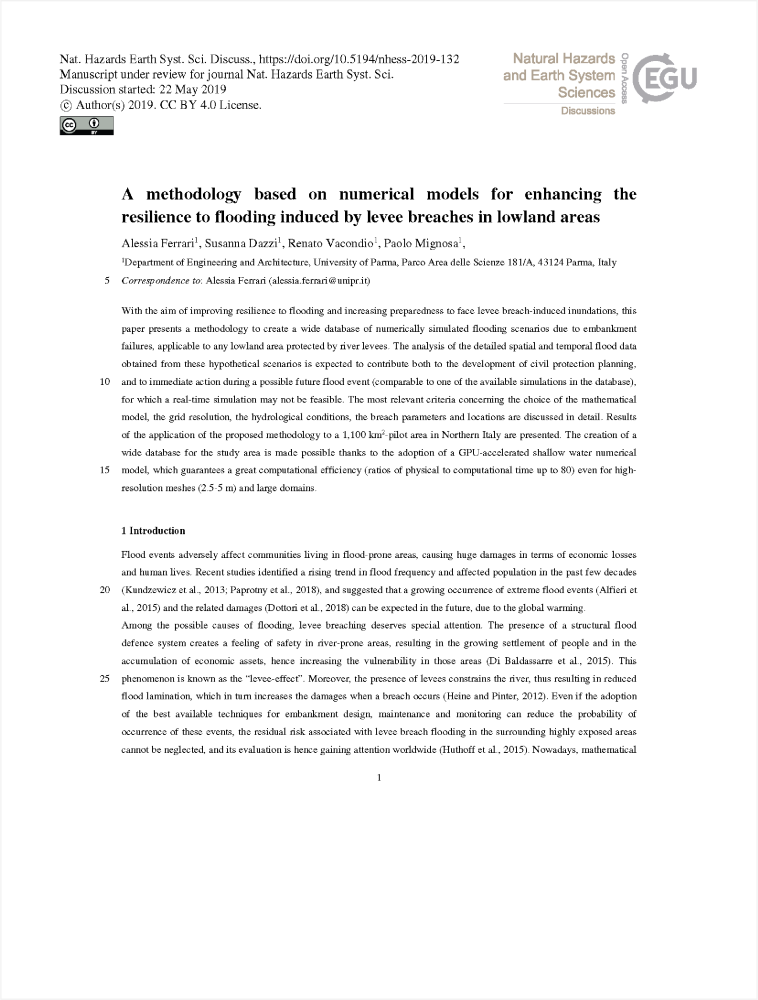 A. Ferrari, S. Dazzi, R. Vacondio, P. Mignosa A. Ferrari, S. Dazzi, R. Vacondio, P. Mignosa
Enhancing the resilience to flooding induced by levee breaches in lowland areas: a methodology based on numerical modelling
in Naturtal Hazards and Earth System Sciences, 2020
With the aim of improving resilience to flooding and increasing preparedness to face levee-breach-induced inundations, this paper presents a methodology for creating a wide database of numerically simulated flooding scenarios due to embankment failures, applicable to any lowland area protected by river levees. The analysis of the detailed spatial and temporal flood data obtained from these hypothetical scenarios is expected to contribute both to the development of civil protection planning and to immediate actions during a possible future flood event (comparable to one of the available simulations in the database) for which real-time modelling may not be feasible.
|
|
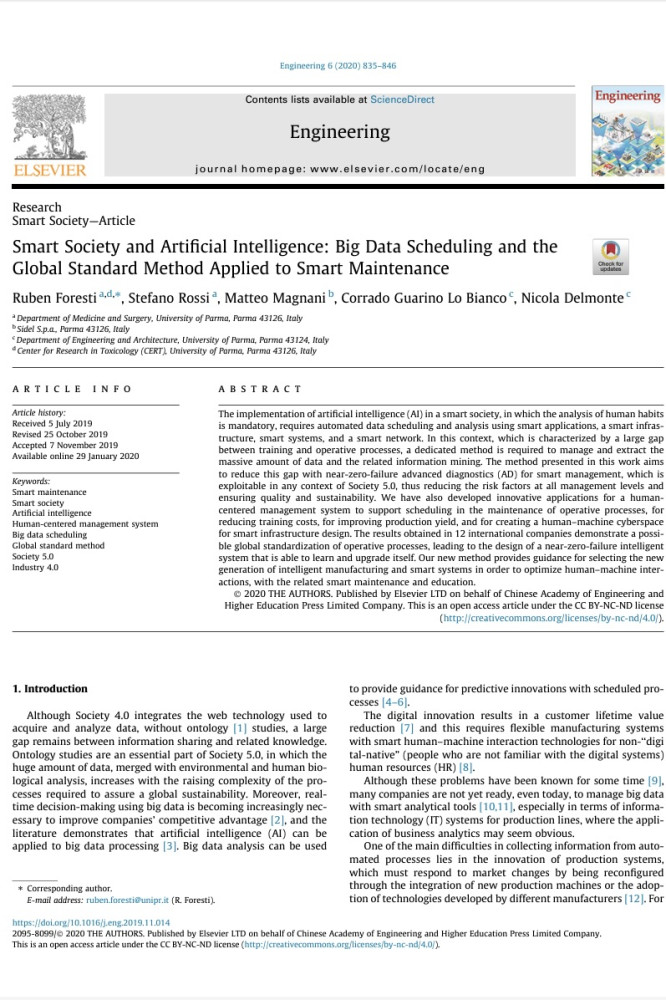 R. Foresti, S. Rossi, M. Magnani, C. Guarino Lo Bianco, N. Delmonte R. Foresti, S. Rossi, M. Magnani, C. Guarino Lo Bianco, N. Delmonte
Smart Society and Artificial Intelligence: Big Data Scheduling and the Global Standard Method Applied to Smart Maintenance
in Engineering, 2020
The implementation of artificial intelligence (AI) in a smart society, in which the analysis of human habits is mandatory, requires automated data scheduling and analysis using smart applications, a smart infrastructure, smart systems, and a smart network. In this context, which is characterized by a large gap between training and operative processes, a dedicated method is required to manage and extract the massive amount of data and the related information mining. The method presented in this work aims to reduce this gap with near-zero-failure advanced diagnostics (AD) for smart management, which is exploitable in any context of Society 5.0, thus reducing the risk factors at all management levels and ensuring quality and sustainability.
|
|
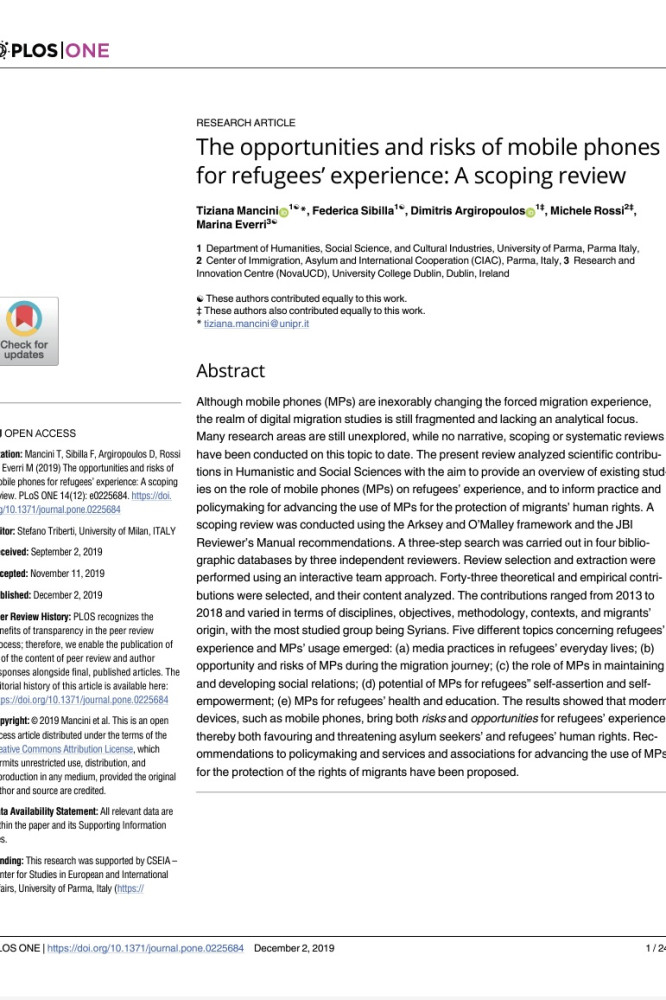 T. Mancini, F. Sibilla, D. Agiropoulos, M. Rossi, M. Everri T. Mancini, F. Sibilla, D. Agiropoulos, M. Rossi, M. Everri
The opportunities and risks of mobile phones for refugees’ experience: A scoping review
in PLOS ONE, 2019
Although mobile phones (MPs) are inexorably changing the forced migration experience, the realm of digital migration studies is still fragmented and lacking an analytical focus. Many research areas are still unexplored, while no narrative, scoping or systematic reviews have been conducted on this topic to date. The present review analyzed scientific contributions in Humanistic and Social Sciences with the aim to provide an overview of existing studies on the role of mobile phones (MPs) on refugees’ experience, and to inform practice and policymaking for advancing the use of MPs for the protection of migrants’ human rights. A scoping review was conducted using the Arksey and O’Malley framework and the JBI Reviewer’s Manual recommendations. A three-step search was carried out in four bibliographic databases by three independent reviewers.
|
|
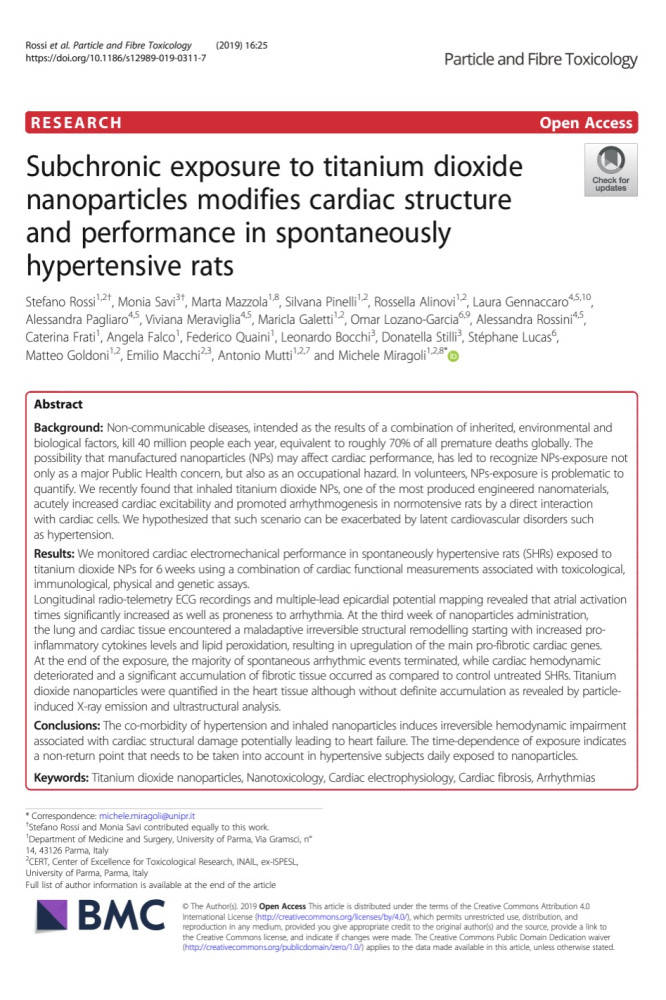 S. Rossi, M. Savi, M. Mazzola et al. S. Rossi, M. Savi, M. Mazzola et al.
Subchronic exposure to titanium dioxide nanoparticles modifies cardiac structure and performance in spontaneously hypertensive rats
in Particle and Fibre Toxicology, 2019
Non-communicable diseases, intended as the results of a combination of inherited, environmental and biological factors, kill 40 million people each year, equivalent to roughly 70% of all premature deaths globally. The possibility that manufactured nanoparticles (NPs) may affect cardiac performance, has led to recognize NPs-exposure not only as a major Public Health concern, but also as an occupational hazard. In volunteers, NPs-exposure is problematic to quantify. We recently found that inhaled titanium dioxide NPs, one of the most produced engineered nanomaterials, acutely increased cardiac excitability and promoted arrhythmogenesis in normotensive rats by a direct interaction with cardiac cells. We hypothesized that such scenario can be exacerbated by latent cardiovascular disorders such as hypertension.
|
|
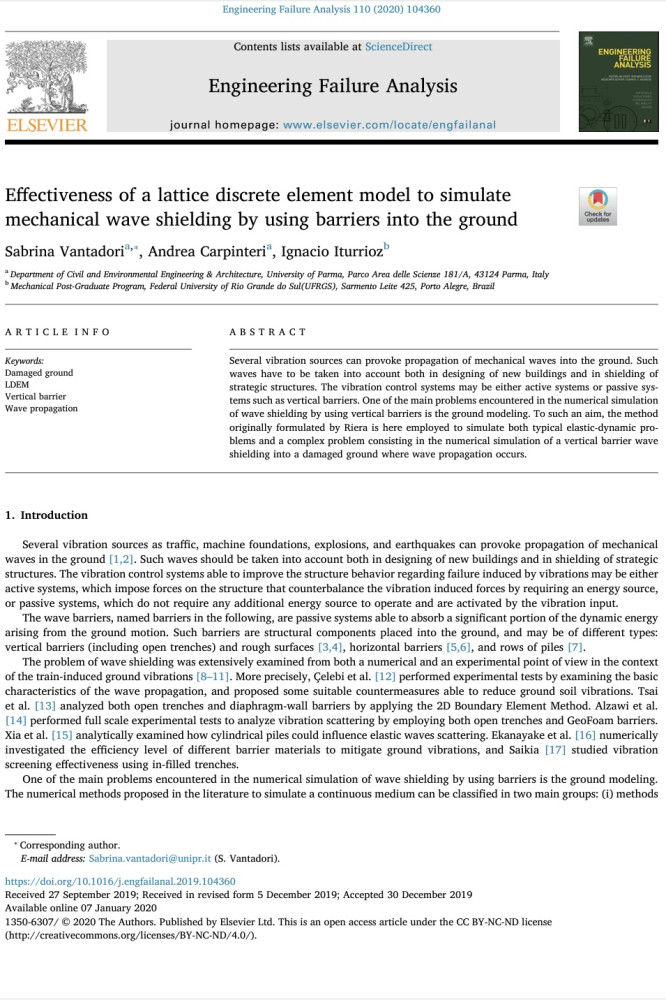 S. Vantadori, A. Carpinteri, I. Iturrioz S. Vantadori, A. Carpinteri, I. Iturrioz
Effectiveness of a lattice discrete element model to simulate mechanical wave shielding by using barriers into the ground
in Engineering Failure Analysis, 2020
Several vibration sources can provoke propagation of mechanical waves into the ground. Such waves have to be taken into account both in designing of new buildings and in shielding of strategic structures. The vibration control systems may be either active systems or passive systems such as vertical barriers. One of the main problems encountered in the numerical simulation of wave shielding by using vertical barriers is the ground modeling. To such an aim, the method originally formulated by Riera is here employed to simulate both typical elastic-dynamic problems and a complex problem consisting in the numerical simulation of a vertical barrier wave shielding into a damaged ground where wave propagation occurs.
|
 Coming Soon...? A reappraisal of the legal and ethical implications of AWS ahead of the first metting of the CCW Group of Governmental Experts on Lethal AWS"
Coming Soon...? A reappraisal of the legal and ethical implications of AWS ahead of the first metting of the CCW Group of Governmental Experts on Lethal AWS"
 E. Carpanelli, N. Lazzerini (eds.)
E. Carpanelli, N. Lazzerini (eds.) M. Baldassari, E. Castelli, M. Truffelli, G. Vezzani (eds.)
M. Baldassari, E. Castelli, M. Truffelli, G. Vezzani (eds.) A. D'Aloia, M.C. Errigo (eds.)
A. D'Aloia, M.C. Errigo (eds.) M.Baldassari, E. Castelli, M. Truffelli, G. Vezzani (a cura di)
M.Baldassari, E. Castelli, M. Truffelli, G. Vezzani (a cura di) A. Vezzani, E. Barkai, R. Burioni
A. Vezzani, E. Barkai, R. Burioni G.M. Ceccarelli, Risky markets. Marine Insurance in Renaissance Florence
G.M. Ceccarelli, Risky markets. Marine Insurance in Renaissance Florence F. Crudo, E. Varga, G. Aichinger, G. Galaverna, D. Marko, C. Dall'Asta, L. Dellafiora
F. Crudo, E. Varga, G. Aichinger, G. Galaverna, D. Marko, C. Dall'Asta, L. Dellafiora A. Ferrari, S. Dazzi, R. Vacondio, P. Mignosa
A. Ferrari, S. Dazzi, R. Vacondio, P. Mignosa R. Foresti, S. Rossi, M. Magnani, C. Guarino Lo Bianco, N. Delmonte
R. Foresti, S. Rossi, M. Magnani, C. Guarino Lo Bianco, N. Delmonte T. Mancini, F. Sibilla, D. Agiropoulos, M. Rossi, M. Everri
T. Mancini, F. Sibilla, D. Agiropoulos, M. Rossi, M. Everri S. Rossi, M. Savi, M. Mazzola et al.
S. Rossi, M. Savi, M. Mazzola et al. S. Vantadori, A. Carpinteri, I. Iturrioz
S. Vantadori, A. Carpinteri, I. Iturrioz





